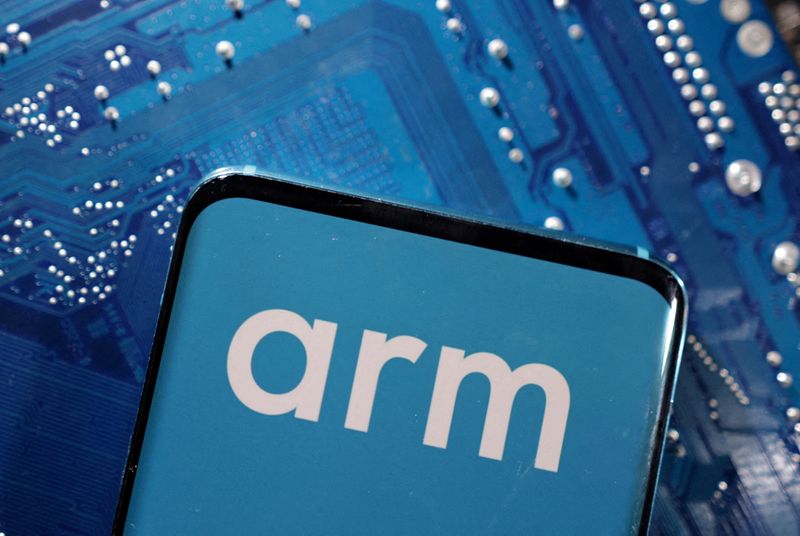By Echo Wang and Anirban Sen
NEW YORK (Reuters) - Arm Holdings Ltd, the chip designer owned by SoftBank (TYO:9984) Group Corp, is planning to ask investors to pay $47 to $51 for each of its shares when it begins marketing its initial public offering (IPO) next week, people familiar with the matter said on Saturday.
The price range, which has not been previously reported, would translate into a valuation for Arm of roughly between $50 billion and $54 billion, and an offering of $5 billion to $5.4 billion. It would make Arm the most valuable company to list in New York since electric car maker Rivian (NASDAQ:RIVN) Automotive debuted in 2021.
SoftBank could possibly raise this range before the IPO prices, should investor demand prove strong, said the sources, who requested anonymity because the matter is confidential.
Arm declined to comment while SoftBank did not immediately respond to requests for comment.
The valuation Arm is currently seeking represents a climb-down from the $64 billion valuation at which SoftBank acquired the 25% stake in the company it did not already own from its $100 billion Vision Fund last month.
This reflects a recent drop in demand for some of Arm's offerings. For the year ended March 31, Arm's sales fell to $2.68 billion, hurt mainly by a slump in global smartphone shipments.
Arm has already signed up many of its major clients as investors in its IPO, Reuters reported on Friday. These include Apple Inc (NASDAQ:AAPL), Nvidia (NASDAQ:NVDA) Corp, Alphabet (NASDAQ:GOOGL) Inc, Advanced Micro Devices (NASDAQ:AMD) Inc, Intel Corp (NASDAQ:INTC), Samsung Electronics Co Ltd (KS:005930), Cadence Design (NASDAQ:CDNS) Systems Inc and Synopsys (NASDAQ:SNPS) Inc.

The companies' interest is fueled by a desire to expand their commercial relationship with Arm and make sure rivals do not gain an edge, Reuters has previously reported.
This is because the customers view Arm's semiconductor designs as an indispensable resource. They are used by more than 260 technology companies to make over 30 billion chips annually, powering 99% of the world’s smartphones and everything from the tiniest of sensors to the most powerful supercomputers.